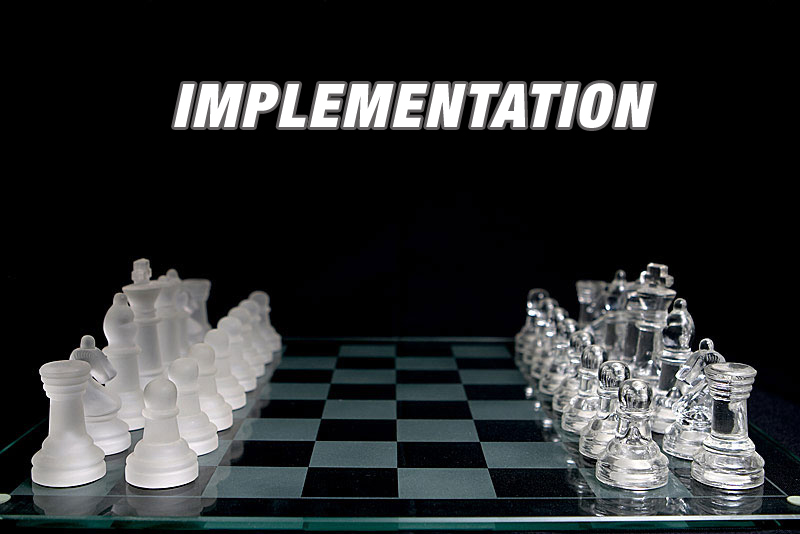
In this third article of our business strategy series, we look at implementation of a new business strategy for your company. In our last article we explored the development of a formal strategy for your particular business. Once you have all of the details sorted out and the plan is finalized, the next logical step is putting the new strategy into action.
The steps in implementation can be broken down many different ways, but we will consider them in three large groupings – resources, management, monitoring.
1. Resources
Perhaps the largest piece in implementing a new business strategy centers around your organization’s resources. To do something new, you must have the resources to do it, and they must be put to good use in order to be effective. Some of the things which must be done might include: setting up a budget for the new strategy, allocating money for the implementation (everything requires money), purchasing or developing new technology, developing new products, training new and/or existing personnel, and managing time.
Good management of your resources is the foundation for a successful business strategy implementation. If you fail to set aside enough money or properly train people, for example, then your new ideas will fail because of poor preparation and resource control. Starting from the very beginning, be sure to carefully and wisely manage your resources in a way that undergirds success.
2. Management
Anything going on in the world of business needs management, and this is particularly true with the implementation of a new business strategy. When you have a new plan, newly trained people, new products and/or services, then you need highly qualified management to ensure that everything goes as planned. During the initial roll out of a new business strategy, there needs to be a clearly defined chain of command in your management structure.
When doing something new, there’s always the chance for things to go wrong, so there need to be people on the ground who can direct and fix as needed. Each person needs to be clear on exactly what their task is in the new structure, and management can help keep each person doing what their position requires. Having quality management in the field during the implementation stage of a new business strategy is critical, and can help steer your organization around unforeseen bumps in the road.
3. Monitoring
Monitoring is closely related to management, but is not necessarily the same thing. As a new business strategy is put in place, there need to be established ways to monitor this implementation, ensuring that every particular step is happening when it needs to happen, where it needs to happen, and how it needs to happen. This stage does not involve tracking the results of a new strategic plan – that’s for the next blog post.
Monitoring is simply the oversight needed to make sure the plan is being worked out in the real world according to the models and plans from the development stage. Sometimes this monitoring can be done by management, but often it needs its own department, reporting to management about progress and noting potential issues along the way.
As your organization implements a new business plan, it’s important to remember that consistency and involvement are key. Everyone has to buy into the new plan, from ownership to management to employee. If the chain breaks at any point, then the new strategy can falter and even fail. So as you prepare to implement the plan, take the time to make sure people understand it, can do it, and even get excited about it. After all, you’ve crafted this new business strategy to ensure the continuing success of your company – the people putting it into action need to be just as settled with it as those who put it together.
Next up in our business strategy series we have Step 3: Evaluation.




